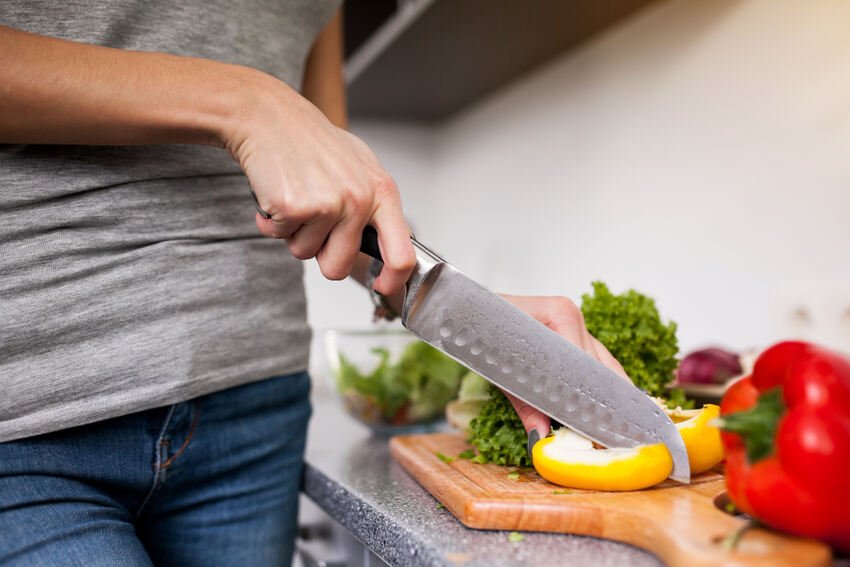In the culinary world, precision is everything. Whether you’re a professional chef, a butcher, or a passionate home cook, a sharp knife is your most important tool. It can mean the difference between a clean slice and a torn edge, between efficient preparation and frustrating slowness. Yet, even the finest knives lose their edge over time. This is where Knife Sharpeners becomes indispensable.
Professional knife sharpeners have revolutionized how both kitchens and individuals maintain their blades, offering a combination of speed, accuracy, and durability that manual methods simply can’t match. Let’s explore how professional knife sharpeners work, what makes them so effective, and how to choose the right one for your needs.
Why Sharp Knives Matter More Than You Think
A sharp knife is not just about cutting power — it’s about safety, efficiency, and control. When your knife is dull, you need to exert more force, increasing the risk of slips and accidents. A well-sharpened knife glides effortlessly through food, maintaining consistency and preserving ingredients’ texture and flavor.
Sharp knives also improve productivity. In professional kitchens, where speed and accuracy matter, every second counts. A blade that cuts cleanly through vegetables, meats, and herbs ensures you can focus on culinary creativity rather than struggling with your tools.
The Evolution of Knife Sharpening
Historically, knife sharpening was an art form. Chefs used whetstones, honing rods, and even leather strops to maintain their blades. While these traditional tools are still loved by many, they require skill and patience.
Today, technology has transformed the process. Professional knife sharpeners — from precision electric sharpeners to advanced whetstone systems — bring consistency and ease of use to every kitchen. They’re engineered to restore blades to their original factory sharpness (or better) in a fraction of the time.
How Professional Knife Sharpeners Work
A professional Knife Sharpener operates through one or more abrasive surfaces designed to grind and polish a knife’s edge. The process involves multiple stages:
-
Coarse Sharpening – Removes chips and reshapes a dull or damaged edge.
-
Fine Sharpening – Refines the blade for sharpness and precision cutting.
-
Polishing or Honing – Smooths the edge and aligns microscopic metal teeth for a mirror finish.
High-end electric models often include automatic angle guides, ensuring the blade maintains the perfect sharpening angle (usually 15–20 degrees depending on the knife type). Manual sharpeners, meanwhile, give users more control and are often preferred by purists who enjoy the sharpening process.
Types of Professional Knife Sharpeners
Choosing the right sharpener depends on your needs, skill level, and knife collection. Here are the most common types:
1. Electric Knife Sharpeners
Electric models are the go-to choice for professionals who value speed and convenience. These sharpeners use motorized abrasive wheels that grind, hone, and polish blades automatically.
Advantages:
-
Fast and efficient
-
Consistent results with minimal effort
-
Ideal for both home and commercial kitchens
Best for: Busy chefs, restaurants, and culinary schools that need quick, reliable sharpening.
2. Manual Pull-Through Sharpeners
Manual sharpeners feature V-shaped slots with abrasive surfaces (like diamond or ceramic) that sharpen blades as you pull them through.
Advantages:
-
Easy to use
-
Compact and portable
-
Great for quick touch-ups
Best for: Home cooks or those who want a balance between control and simplicity.
3. Whetstones and Sharpening Stones
The traditional method for sharpening, whetstones offer full control and can achieve incredibly fine edges when used correctly.
Advantages:
-
Precision sharpening
-
Suitable for high-end knives
-
Customizable edge angles
Best for: Professionals and enthusiasts who enjoy the craftsmanship of sharpening.
4. Sharpening Systems
These are hybrid kits that combine the precision of whetstones with guided angles and clamping mechanisms.
Advantages:
-
Professional accuracy
-
Adjustable angles
-
Suitable for both beginners and experts
Best for: Knife collectors and chefs who want total control over their edge geometry.
Key Features to Look for in a Professional Knife Sharpener
When selecting a Knife Sharpener, consider these essential features:
-
Angle Control: Look for models with adjustable or automatic angle guides to maintain consistent sharpening.
-
Abrasive Material: Diamond, ceramic, and tungsten carbide are the most effective abrasives for long-lasting sharpness.
-
Multi-Stage Design: A good sharpener includes coarse, fine, and honing stages.
-
Versatility: Ensure it supports both straight-edge and serrated knives.
-
Durability: Invest in a sharpener with solid construction and quality materials for years of performance.
-
Ease of Cleaning: Removable sharpening modules make maintenance easy.
Top Benefits of Using a Professional Knife Sharpener
1. Consistent Performance
Unlike manual techniques that depend on user skill, professional sharpeners deliver repeatable, precise results every time.
2. Time Efficiency
In a busy kitchen, time is money. Electric models can sharpen a knife in under a minute, keeping the workflow uninterrupted.
3. Longer Knife Lifespan
Professional sharpeners remove minimal material while sharpening, ensuring your blades last longer without thinning or deforming.
4. Versatility Across Knife Types
From chef’s knives and paring knives to serrated and Japanese blades, many professional sharpeners handle all with ease.
5. Enhanced Safety
Sharp knives mean safer cutting — less force, fewer slips, and more control.
Maintaining Your Sharpener and Knives
To keep your sharpener and knives in optimal condition:
-
Clean your sharpener regularly to remove metal shavings.
-
Avoid sharpening dirty or greasy knives.
-
Store knives properly — in blocks, on magnetic strips, or with blade guards.
-
Hone knives regularly between sharpening sessions.
Remember: sharpening restores the edge, while honing maintains it.
Common Mistakes to Avoid
-
Over-sharpening: Doing it too often can wear down your blade unnecessarily.
-
Wrong Angle: Using an incorrect angle can damage the edge geometry.
-
Skipping Honing: Without honing, knives lose their edge faster.
-
Using the Wrong Sharpener: Not every sharpener suits all knife types. Always check compatibility.
Why Professionals Trust High-Quality Sharpeners
Professional chefs know that a great knife deserves proper care. High-end Knife Sharpeners are designed with precision engineering to match the demands of modern kitchens. They allow chefs to focus on creativity and consistency rather than maintenance.
Moreover, modern sharpeners come with ergonomic designs, safety features, and smart sensors that adjust sharpening intensity automatically — making them perfect companions in professional environments.
The Future of Knife Sharpening Technology
The next generation of sharpeners is integrating smart sensors, AI-based feedback, and customizable sharpening profiles. These advanced systems can analyze blade material and adjust automatically, ensuring optimal results for every knife type.
Imagine a world where your Knife Sharpener connects to an app that tracks sharpening history, reminds you of maintenance schedules, and even recommends the ideal angle for each blade — that’s the future we’re moving toward.
Conclusion
Professional knife sharpeners are no longer luxury tools — they’re kitchen essentials. Whether you’re slicing vegetables at home or preparing a five-star meal, a sharp knife is your greatest ally. By investing in a high-quality Knife Sharpener, you ensure precision, safety, and performance that lasts.
As culinary tools evolve, so does the art of maintaining them. Professional sharpeners offer the perfect blend of tradition and technology, allowing chefs and home cooks alike to keep their blades — and their skills — razor-sharp.
FAQs
1. How often should I sharpen my knives?
For home use, once every 2–3 months is ideal. Professionals may sharpen weekly depending on usage.
2. Can a Knife Sharpener damage my knife?
Only if used incorrectly. Always follow the manufacturer’s guidelines for angle and pressure.
3. Are electric sharpeners better than manual ones?
Electric sharpeners offer convenience and speed, while manual ones provide greater control — the choice depends on preference.
4. Can I sharpen serrated knives?
Yes, but only certain sharpeners are designed for serrated blades. Always check before use.
5. What’s the difference between honing and sharpening?
Honing realigns the blade edge, while sharpening removes material to create a new edge.
Read Dive is a leading technology blog focusing on different domains like Blockchain, AI, Chatbot, Fintech, Health Tech, Software Development and Testing. For guest blogging, please feel free to contact at readdive@gmail.com.





